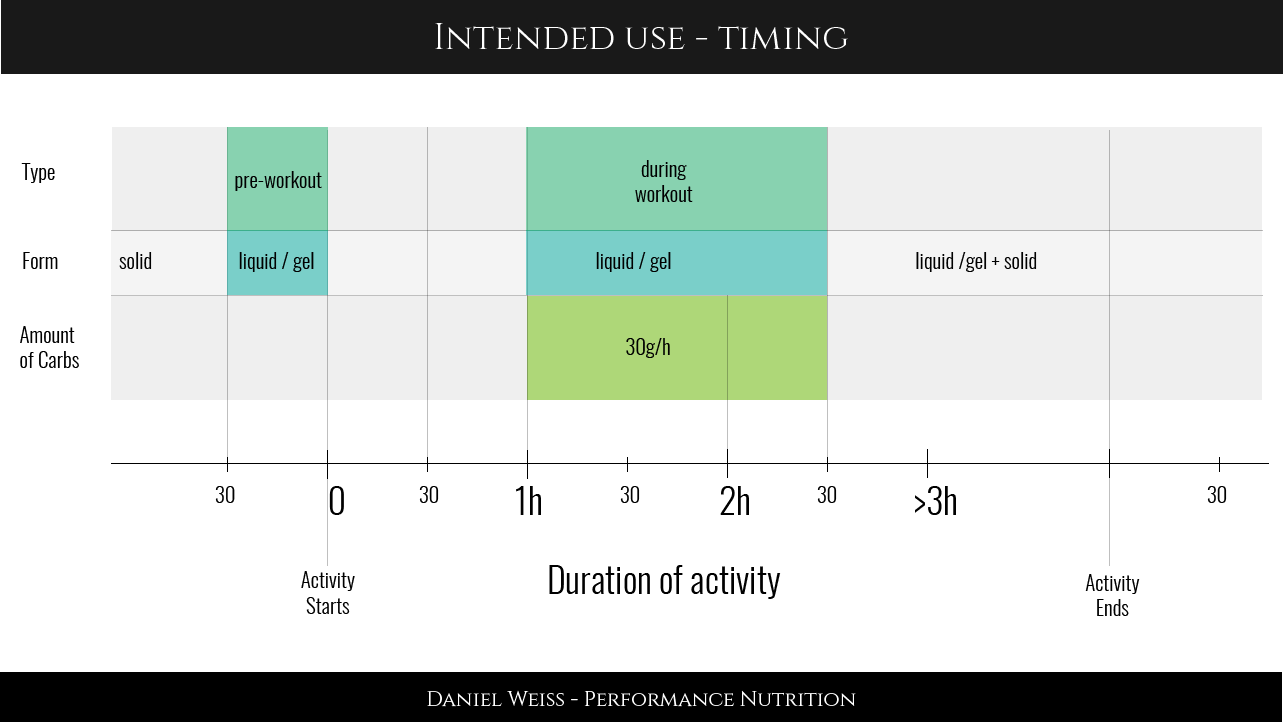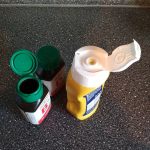Today I wanted to present to you the energy gel I have been using for a while, which means it is tested and works for shorter events below three hours, but you can use it also for a longer event.
The reason why I make my own gels is simple. I am not willing to spend money on pre-made gels, that are full of dextrose, maltose, sacharose, which are highly processed carbohydrates. In some people, these highly processed foods can also lead to gastro-intestinal distress. Besides that, they are often full of additives and added vitamins, which are there for no other purpose than marketing.
The major benefit I see in using whole foods such as fruits for energy is that they contain micronutrition that can potentially help our performance by providing magnesium, potassium, or calcium. Often, micro-nutrients work in synergy and cannot be replicated by mixing lab-made substances because we still lack a lot of knowledge about these synergies and health effects.
Having said all of that, there are energy gels on the market that are natural, high quality, and that I would recommend.
But the reason you are reading this post is probably because you also enjoy preparing your own food and gels.
Disclaimer: I am not saying that homemade is automatically better. There is some serious science and research behind the premium brands. But we can perform more than well with our own and make them in tune with our taste if you enjoy it.
The gel we are going to prepare uses a mixture of carbohydrates, namely fructose and glucose. Since glucose and fructose use different transport systems, we can get more energy from them than if we only used one transport system.
As noted in the article about carbohydrate ingestion I wrote, the studies suggest that we are limited to 60g/h of glucose and about 30g/h of fructose. Read it if you are interested in knowing more about dosage and reasoning behind the ingredients.
Energy Gel – Go Intense
Gel is to be used for activities spanning from 1 hour to 2h:30m.
You can use different dried fruits like dates or prunes, but I recommend prunes for their good mix of carbs and micronutrient content.
- 100 g Dried Dates (300 kcal, g:f ratio 1.0)
- 100 g Prunes – the ideal dried fruit (240 kcal, g:f ratio 2.0)
- 100 g Banana – fresh or frozen (89 kcal, g:f ratio 1.0)
- 175-200 ml Water
- 2 g Salt
- 4-5 g BCAAs (for muscle damage prevention, recovery, energy production. In studies, 0,8g/kg were used)
-
Pre-soak your dates if you use dried dates in 175-200 ml of water
-
Add banana, salt and BCAAs to the mix and blend well.
-
Fill your flask of choice. You can refrigerate your gels overnight.

I wrote both dried dates and prunes in the recipe. You can use one of those or both to fit your needs.
I use BCAAs for muscle damage prevention, improved recovery, energy production. In studies, 0,8g/kg were used. [2]
Packing your gels
When you get your ingredients right, there is only one thing that stands in your way – the packaging. Ideally, you want a transparent bottle so you can see how much gel there is left. For example, when you have a 500ml flask, you can mark 250ml on the outside, which could be your intake for an hour. Here are several options I have experimented with:
- Original gel packaging. Buy a few gels and after you use them, refill them with your own. There are two cons to this. To refill them, you need considerably liquid substance because of the thin neck, which means you cannot pack as much energy into the small flasks.
- Small bottles. For my races I used 250ml plastic bottles I had from vitamins. They work perfectly fine as long as you have something to carry them in, like a vest, backpack, or a belt. They also tend to have thicker neck, which makes them easy to refill. The best bottle I have had was a 250ml squeeze-bottle from a mustard (until somebody threw it away).
- Soft flasks. Soft flasks seem to be the best option, having the benefit of thicker neck for easy filling and ability to squeeze the gel out of it. Here is a review of different soft-flasks.
- Fructose and Glucose content of fruit
- Kim, Dong-Hee et al. “Effect of BCAA Intake during Endurance Exercises on Fatigue Substances, Muscle Damage Substances, and Energy Metabolism Substances.” Journal of Exercise Nutrition & Biochemistry 17.4 (2013): 169–180. PMC. Web. 30 July 2018.


